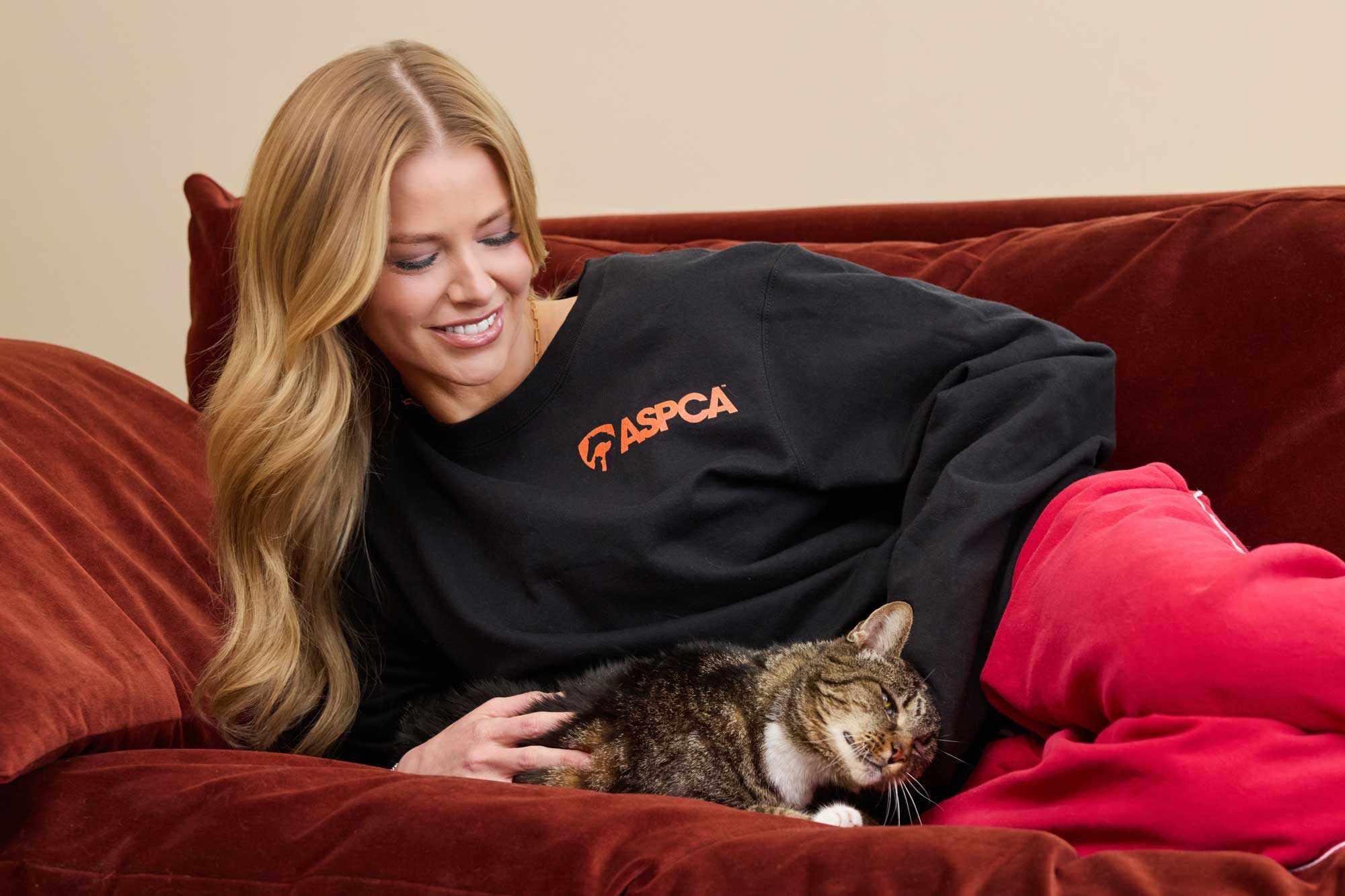Adopting a rescue pet can be one of the most rewarding experiences, and Ariana Madix, the beloved Love Island USA host and longtime animal advocate, is on a mission to make it happen for you. Through her partnership with the ASPCA’s Rescue Effect campaign, Madix is shining a spotlight on the millions of dogs and cats waiting for their forever homes. As a proud pet parent to her 18-year-old cat, Kitty, and 6-year-old pit bull mix, Mya Moon, she knows firsthand the joy of giving a rescue animal a second chance. In this comprehensive guide, we’ll explore how to find your perfect rescue pet, inspired by Madix’s passion, with practical tips, heartfelt stories, and expert advice to make the adoption process smooth and fulfilling.
Why Ariana Madix Champions Pet Adoption
Ariana Madix’s love for animals began in childhood, sparked by her mother’s shared passion for helping creatures in need. From rescuing a stray cat in New York City to adopting her “soul dog” Charlotte during college, Madix has built her life around giving animals loving homes. Her work with the ASPCA’s Rescue Effect campaign, launched in August 2025, aims to inspire others to adopt or foster, easing the strain on overcrowded shelters.
The Rescue Effect Campaign Explained
The ASPCA’s Rescue Effect campaign, with Madix as its face, promotes pet adoption and fostering to free up shelter space for more animals. Nearly 6 million dogs and cats entered U.S. shelters in 2024, many staying longer due to limited resources. By adopting or fostering, you create a ripple effect, helping multiple animals find homes.
Ariana’s Personal Connection to Rescue
Madix’s bond with her pets—Kitty, rescued as a stray, and Mya Moon, adopted during the pandemic—shows the transformative power of adoption. “Pet adoption has been important to me since I was a little kid,” she says. Her stories of caring for Charlotte, who lived to 18, inspire others to visit shelters and find their perfect match.
Why Adopt a Rescue Pet?
Adopting a rescue pet isn’t just about saving a life—it’s about enriching your own. Shelter animals come in all breeds, sizes, and ages, ready to bring love and loyalty to your home. Plus, adoption is often more affordable than buying from a breeder, with many shelters covering initial vaccinations and spaying/neutering.
The Emotional Rewards of Adoption
When I adopted my rescue dog, Luna, from a local shelter, I wasn’t prepared for how much she’d change my life. Her wagging tail and endless enthusiasm turned tough days into joyful ones. Like Madix, I found that rescue pets have a special way of showing gratitude, making every moment together feel like a gift.
The Ripple Effect of One Adoption
As Madix emphasizes, adopting one pet frees up space for another animal in need. In 2024, shelters struggled with overcrowding, with dogs often waiting longer for homes. By choosing adoption, you’re not just helping one animal—you’re supporting an entire shelter system.
Comparison: Adopting vs. Buying a Pet
| Factor | Adopting from a Shelter | Buying from a Breeder |
|---|---|---|
| Cost | $50–$200 (often includes vet care) | $500–$2,000+ |
| Impact | Saves a life, reduces shelter strain | Supports breeding industry |
| Health | Often vaccinated/spayed | May require separate vet costs |
| Variety | Wide range of breeds, ages | Specific breeds, limited options |
How to Find Your Perfect Rescue Pet
Finding the right rescue pet starts with understanding your lifestyle and preferences. Whether you want a cuddly cat like Madix’s Kitty or an energetic dog like Mya Moon, shelters have animals to match every personality. Here’s how to begin your adoption journey, inspired by Madix’s advice to “just go look.”
1. Assess Your Lifestyle
Before visiting a shelter, consider your daily routine, living space, and activity level. A high-energy dog might not suit a small apartment, while a senior cat could be perfect for a quiet home. Madix adopted Mya Moon because her playful energy matched her active lifestyle.
Questions to Ask Yourself
- Do I have time for daily walks or playtime?
- Is my home pet-friendly (e.g., yard, no allergies)?
- Am I ready for a long-term commitment (10–20 years)?
2. Visit Local Shelters or Rescues
Shelters like those in the ASPCA’s network (over 550 nationwide) offer a variety of pets waiting for homes. Use resources like aspca.org/therescueeffect to find participating shelters near you. Madix encourages visiting in person to meet animals and see their unique personalities shine.
My Shelter Visit Story
When I walked into my local shelter, I was overwhelmed by the wagging tails and hopeful eyes. A volunteer introduced me to Luna, a shy mutt who blossomed during our meet-and-greet. That connection, as Madix describes, is what makes shelter visits so special—you never know who you’ll fall in love with.
3. Consider Fostering First
If you’re not ready to adopt, fostering is a fantastic alternative. It gives pets a break from the shelter environment and helps you test compatibility. Madix and the ASPCA highlight fostering as a way to save lives while shelters take in more animals.
Pros and Cons of Fostering
- Pros: Helps animals, no long-term commitment, often free supplies.
- Cons: Emotional goodbyes, potential for minor home damage.
4. Use Online Adoption Platforms
Websites like Petfinder or Adopt a Pet let you browse pets by breed, age, or location. For example, a Catahoula Leopard Dog mix named Ariana Madix is up for adoption in Pawling, NY, showing the variety available online.
Top Platforms for Finding Rescue Pets
- Petfinder: Extensive database of adoptable pets across the U.S.
- Adopt a Pet: User-friendly, with filters for location and pet type.
- ASPCA: Lists shelters in the Rescue Effect campaign.
5. Prepare for the Adoption Process
Most shelters, like Friends of Normie Rescue, have a clear adoption process: submit an application, have an interview, meet the pet, sign a contract, and pay a fee (often $50–$200). Be ready for a home visit or questions about your pet care experience.
Typical Adoption Steps
- Submit an online application with your lifestyle details.
- Complete a phone or in-person interview.
- Meet the pet to ensure a good match.
- Sign a contract and pay any fees.
Ariana’s Tips for a Successful Adoption
Madix’s experience as a lifelong animal lover offers valuable lessons for new adopters. Her advice centers on patience, open-mindedness, and understanding the unique needs of rescue pets. “There are amazing animals in shelters who match all the things you’re looking for,” she says.
6. Be Open to Different Breeds and Ages
Madix adopted a Chihuahua/Husky mix, Charlotte, proving that unique combinations can be the best fit. Don’t fixate on a specific breed—senior pets or mixed breeds often have just as much love to give and may be easier to care for.
Why Senior Pets Are Great
Senior pets, like Madix’s 18-year-old Kitty, are often calmer and already trained. They’re ideal for first-time owners or those with busy schedules, and they’re less likely to be adopted, making your choice even more impactful.
7. Understand Behavioral Needs
Some rescue pets, especially those with longer shelter stays, may have medical or behavioral challenges. Madix’s Mya Moon once needed $6,000 in surgery after ingesting harmful objects, a reminder to be prepared for unexpected costs.
Preparing for Behavioral Challenges
- Work with a trainer for anxious or untrained pets.
- Budget for potential vet visits.
- Be patient as your pet adjusts to a new home.
8. Build a Support Network
Connect with local rescue communities or online forums for advice. Madix credits her mother for instilling a love for animals, and you can find similar support through groups like Friends of Normie, with 44,000 followers helping match cats with homes.
Where to Find Support
- Join local rescue groups on social media.
- Follow ASPCA’s #TheRescueEffect campaign for inspiration.
- Ask shelters for post-adoption resources.
9. Invest in Pet Insurance
Pet insurance can save thousands on unexpected vet bills, as Madix learned with Mya’s surgery. Plans like those from Trupanion or Healthy Paws start at $20–$50/month, covering emergencies and routine care.
Insurance Cost Comparison
| Provider | Monthly Cost (Dog) | Monthly Cost (Cat) | Coverage Highlights |
|---|---|---|---|
| Trupanion | $30–$70 | $15–$40 | 90% of eligible vet bills |
| Healthy Paws | $25–$60 | $15–$35 | No payout limits |
Overcoming Common Adoption Concerns
Adopting a pet can feel daunting, but Madix’s journey shows it’s worth the effort. Here are solutions to common worries, ensuring you’re ready to welcome a rescue pet into your life.
10. “I Don’t Have Enough Space”
Even small apartments can work for pets, especially cats or small dogs. Madix lived with her cat Kitty in New York City, proving that love and care matter more than square footage.
Tips for Small Spaces
- Choose a pet suited to your home size (e.g., cats or small breeds).
- Create vertical spaces with cat trees or shelves.
- Use crates for dogs to provide a safe, cozy area.
11. “I’m Worried About Costs”
Adoption fees are often lower than breeder prices, and many shelters include initial vet care. Budgeting $50–$100/month for food, toys, and care, plus insurance, keeps costs manageable.
Budgeting for a Pet
- Food: $20–$50/month (bulk buying saves more).
- Supplies: $100–$200 upfront for beds, toys, etc.
- Vet Care: $100–$300/year for routine checkups.
12. “What If the Pet Isn’t a Good Fit?”
Shelters often allow returns within a trial period, and fostering first can help you test compatibility. Madix’s successful adoptions show that patience and preparation lead to lasting bonds.
Trial Period Policies
Most shelters offer 7–30 days to ensure a good match. Check with your local rescue for specifics, and communicate openly if issues arise.
Supporting Shelters Beyond Adoption
If adoption isn’t an option, you can still make a difference, as Madix encourages through the Rescue Effect. Fostering, donating, or volunteering helps shelters continue their lifesaving work.
13. Volunteer at a Shelter
Volunteering, like walking dogs or socializing cats, supports shelters without a long-term commitment. Groups like Rocket Dog Rescue rely on volunteers to prepare pets for adoption.
Volunteer Opportunities
- Walk dogs or play with cats to improve their adoptability.
- Assist at adoption events to connect pets with families.
- Help with administrative tasks like fundraising.
14. Donate to Support Shelters
The ASPCA’s $2 million in grants to over 100 shelters for the Rescue Effect shows the power of donations. Even $5, as highlighted in posts on X, can help cover medical costs for rescue animals.
Donation Impact
- $5: Covers basic medical supplies.
- $25: Funds a day of care for one pet.
- $100: Supports spaying/neutering for multiple animals.
15. Advocate for Shelter Funding
Madix and the ASPCA urge calling on lawmakers to include shelter funding in state budgets. You can write to your local representatives or share campaigns like #TheRescueEffect on social media.
How to Advocate
- Contact your state representative about shelter funding.
- Share ASPCA’s campaign on platforms like Instagram or X.
- Encourage friends to adopt or foster.
People Also Ask (PAA) Section
What is the ASPCA Rescue Effect campaign?
The Rescue Effect, backed by Ariana Madix, is an ASPCA initiative to promote pet adoption and fostering. It aims to reduce shelter overcrowding by encouraging people to adopt, freeing up space for more animals. Visit aspca.org/therescueeffect for details.
How can I adopt a rescue pet near me?
Search online platforms like Petfinder or Adopt a Pet, or visit local shelters listed on the ASPCA’s website. Most require an application, interview, and meet-and-greet. Check shelters in your area for specific processes.
Is fostering a pet a good option?
Fostering is ideal if you can’t commit to adoption. It provides pets a temporary home, reduces shelter stress, and frees up space. Contact local rescues like Friends of Normie to start fostering.
Why should I adopt instead of buying a pet?
Adopting saves lives, reduces shelter overcrowding, and is more affordable than buying from breeders. Rescue pets often come vaccinated and spayed/neutered, and you’re giving a deserving animal a second chance, as Madix advocates.
FAQ Section
How do I know if a rescue pet is right for me?
Assess your lifestyle, space, and time commitment. Visit shelters to meet pets and see which ones connect with you. Fostering first can also help you decide if a pet fits your life.
What are the costs of adopting a rescue pet?
Adoption fees typically range from $50–$200, often including vaccinations and spaying/neutering. Monthly costs for food, supplies, and vet care average $50–$100, with pet insurance adding $15–$70/month.
How can I prepare my home for a rescue pet?
Pet-proof your space by removing hazards, setting up a bed or crate, and buying essentials like food and toys. For apartments, ensure your lease allows pets and create cozy areas for them.
What if I can’t adopt right now?
You can foster, volunteer, or donate to local shelters. Even small contributions, like $5, help cover medical costs, and sharing campaigns like #TheRescueEffect spreads awareness.
How does Ariana Madix’s involvement help shelters?
Madix’s platform amplifies the ASPCA’s Rescue Effect, drawing attention to adoptable pets. Her personal stories inspire others to visit shelters, while ASPCA’s $2 million in grants supports over 100 shelters.
Conclusion: Find Your Perfect Match with Ariana’s Inspiration
Ariana Madix’s passion for rescue pets reminds us that adopting a dog or cat isn’t just about saving a life—it’s about finding a lifelong companion. Whether you’re ready to adopt like Madix did with Kitty and Mya Moon, foster to ease shelter strain, or support through volunteering, every action counts. Visit a local shelter, explore aspca.org/therescueeffect, or share the #TheRescueEffect campaign to join the movement. Your perfect rescue pet is waiting—will you give them the second chance they deserve?


